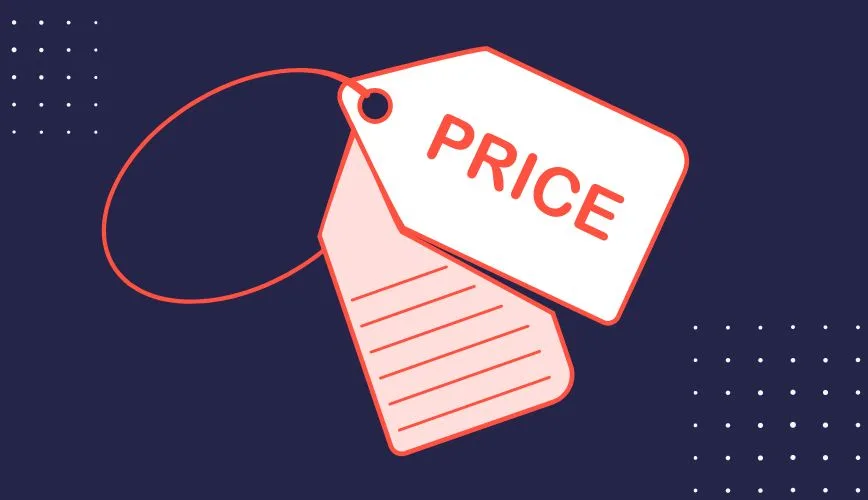Predatory pricing might seem like a smart move to grab market share and elbow out competitors. But is it worth the short-term risks and potential long-term consequences? In this article, we explore what predatory pricing is, take a look at its effects, and discuss the legal side of this practice.
Contents:
What Is Predatory Pricing?
How Does Predatory Pricing Work?
Market Impact of Predatory Pricing
Is Predatory Pricing Legal?
Examples of Predatory Pricing
What Is Predatory Pricing?
Predatory pricing is a pricing strategy that involves setting prices for goods or services below their production or delivery cost to eliminate competitors from the market and create insurmountable barriers for new entrants. This leads to the rise of a monopolist who, for a certain period, wields significant control over a substantial part of the market. After displacing other companies, the monopolist raises prices for their products or services. In these conditions, other market players can’t remain competitive.
How Does Predatory Pricing Work?
A company employing a predatory pricing strategy incurs initial losses, but the price reduction is temporary. After eliminating competitors and rapidly increasing product prices, the company attains supernormal profits, covering and exceeding all initial expenses. If a company engaging in predatory pricing possesses substantial assets, it may be very challenging for other market players to combat this pricing strategy over an extended period of time.
The effectiveness of predatory pricing depends on various factors, including:
- The structure of the niche
- Competitors’ responses
- The company’s ability to recover initial losses after eliminating competition
Motives for adopting a predatory pricing strategy vary. Brands may resort to cutthroat pricing as a temporary strategy to overcome sales crises, boost demand during economic downturns, introduce new products and services to the market, or stimulate demand in a stagnant market. In these situations, companies use discounts and special offers for market activation and attracting price-sensitive customers.
Advantages of Predatory Pricing
Employing predatory pricing as a consistent strategy is expensive and fraught with risks. However, this approach provides a company with several advantages, including:
- Market dominance
- Reduction in the number of competitors
- Strong barrier to market entry for new companies
Disadvantages of Predatory Pricing
At the same time, predatory pricing comes with several drawbacks. The main challenge lies in predicting the long-term success of this strategy in light of several factors:
- Possibility for customers to feel they have been deceived when prices rise
- Risk of attracting regulators’ attention, resulting in monopoly-related legal challenges and/or fines
- Limited competition resulting in market stagnation
Additionally, predatory pricing can pose risks to a brand for three reasons:
- Antitrust lawsuits may result in fines and sanctions even greater than the profits resulting from predatory pricing.
- Projected long-term revenues may not offset initial losses.
- Customers who have become accustomed to low prices may refuse to purchase after prices increase.
Consider a situation where Company A successfully implements predatory pricing, displaces competitors from the market, and raises prices to cover initial losses. However, another strong company with lots of assets (Company B) enters the market. Company B has a technical advantage through use of dynamic pricing software, resilience, and a desire to gain market share. Company B also initiates a price war using a predatory approach. This can turn into a vicious cycle, adversely affecting businesses, customers, and the market as a whole.
Market Impact of Predatory Pricing
In the short term, predatory pricing temporarily reduces product prices, undoubtedly boosting demand and consumer satisfaction. Customers may also benefit from an aggressive competitive environment, as companies strive to maintain market positions by offering higher-quality goods and services.
In the long term, however, competitors who are unable to match predatory prices will eventually exit the market. Strong new market players will feel compelled to adopt similar predatory tactics, risking their involvement in an endless cycle of price wars. In the long run, predatory pricing leads to the overall weakening of market players, a significant increase in prices under monopoly conditions, a deterioration in product or service quality due to diminished competition, and stagnation in development and innovation after the market has been monopolized.
In the competitive e-commerce landscape, a competitor’s predatory pricing strategy presents substantial challenges for companies striving to preserve their market share and profitability. Consequently, automated tools for monitoring competitor prices and MSRP have become crucial allies for online stores looking to efficiently counteract competitors’ undercutting practices.
By monitoring market prices in real time, companies can swiftly identify instances of predatory pricing, where competitors may lower prices unfairly to gain a competitive advantage. For example, a price analysis tool like Pricer24 helps retailers automate data collection from competitors’ websites, providing 24/7 monitoring of competitor and supplier prices. Another method to counteract competitors’ predatory pricing is to use an MSRP monitoring tool. Using Pricer24 MSRP monitoring software, for example, a brand can inform a vendor of a competitor’s price violation and request a response from the vendor.
Is Predatory Pricing Legal?
Predatory pricing and the risk of monopolization pose a serious threat to a healthy competitive environment. Antitrust laws in many countries aim to minimize this threat by ensuring fair and equal competitive conditions and preventing the abuse of market power to eliminate competitors.
However, in practice, companies are not always successful at proving the use of predatory pricing in court. A company harmed by predatory pricing practices must demonstrate that the predatory company set prices below costs specifically to monopolize the market. In other words, legal cases are initiated only when the plaintiff proves that the predator intended to recover losses incurred at the initial stage, establish a monopoly, and harm overall market competition.
USA
To prove an attempt to monopolize the market based on predatory pricing in the United States, the plaintiff must demonstrate that predatory prices caused harm not only to competitors but to overall market competition. If the defendant can prove that setting prices below costs was not related to a desire to monopolize the market, the instance will not be considered a legal violation.
European Union
In Europe, courts consider cases of predatory pricing and attempts at monopolization guided by Article 102 of the Treaty on the Functioning of the European Union. According to this article, any attempts to dominate the internal market are unacceptable. If the plaintiff can prove that monopolization was caused by predatory pricing, the European Commission may intervene.
Examples of Predatory Pricing
Amazon offers one well-known example of predatory pricing. For a long time, Amazon sold printed books and eBooks at prices significantly lower than those offered by competitors, such as traditional brick-and-mortar bookstores. Amazon achieved this by obtaining books through wholesale purchases at a considerable discount. The final retail price at which Amazon sold books to customers equated to the wholesale price available to offline stores.
In the United Kingdom, a prominent example of an unfair pricing strategy is the bus operator war in the town of Darlington. Following deregulation of the British bus transport market in 1986, private companies began competing for public transport passengers. The company Busways offered free rides to undermine its main competitor, DTC, with the intention of pushing them out of the market. Consequently, DTC eventually exited the market, and a regulatory commission labeled Busways’ actions as predatory and harmful to public welfare.
Conclusion
Aggressive competition often brings about positive outcomes, stimulating market development, improving product quality, fostering innovation, and enhancing consumer satisfaction. However, predatory pricing is not an example of beneficial competition. When a monopoly emerges, eliminating competition and gaining absolute market power, it leads to enduring negative consequences for the entire market. If this monopolistic approach becomes a primary and persistent strategy, it will ultimately inflict harm on both businesses and customers.
To address predatory pricing practices in e-commerce, retailers and vendors can act together to advocate for fair competition. Additionally, leveraging software tools designed to monitor competitors’ and partners’ prices can help identify patterns or anomalies that may indicate predatory pricing tactics, such as sudden and significant price drops.
By remaining vigilant and proactive in addressing predatory pricing, businesses can contribute to the preservation of healthy competition and the overall well-being of markets and consumers.
FAQ
How does predatory pricing hurt competition?
Predatory pricing undermines competition by allowing dominant firms to temporarily lower prices to levels that are unsustainable for smaller competitors.
What does predatory pricing involve?
Predatory pricing involves a dominant firm intentionally setting prices below production or delivery costs or the market’s competitive level to eliminate or weaken competitors. This can entail selling products at a loss for a period, intending to recoup losses later by raising prices once competition is diminished or eliminated.
When does pricing become predatory?
Pricing becomes predatory when a dominant firm strategically sets prices at artificially low levels to eliminate competition rather than to reflect genuine market conditions or cost structures. Predatory pricing typically involves a sustained period of pricing below competitive levels.
How does predatory pricing affect markets?
Predatory pricing distorts markets by discouraging competition, inhibiting innovation and potentially leading to monopolies. It can result in reduced consumer choice, higher prices in the long run, and stifled economic growth as smaller competitors are unable to survive or enter the market.









